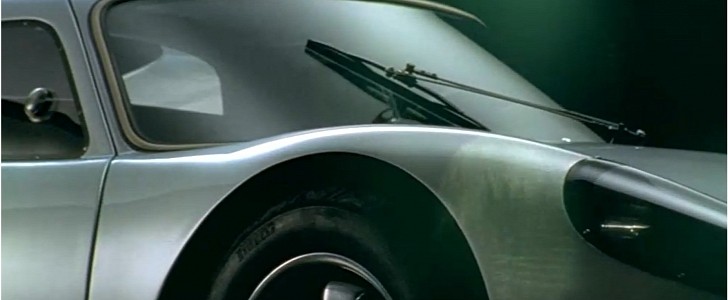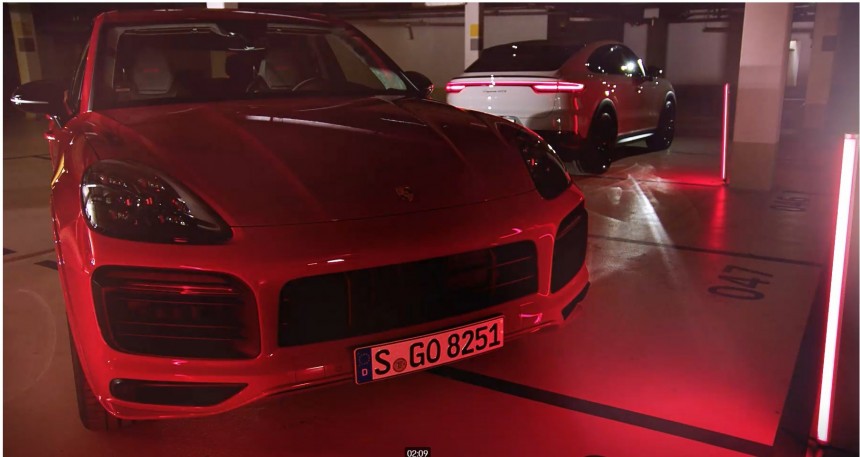The three-letter designation GTS (Gran Turismo Sport) was adopted into Porsche lore when a 904 Carrera GTS won the legendary Targa Florio back in 1964. The present-day GTS models were born not from a motor racing bloodline but rather from the Porsche Cayenne luxury SUV after a successful debut in 2002.
In the wake of the success of the 2002 Cayenne models, Porsche executives clamored for more from the base model SUV in the form of a variant with increased on-road performance capabilities and fit in between the Cayenne S and the Cayenne Turbo. In 2004, a former concept engineer on the first generation SUV, Oliver Laqua, was tasked with designing a Cayenne model that would be worthy of the GTS designation.
Code-named 'Roadrunner', the project began with a lighter-weight vehicle in mind. It was thought that shedding the transfer case would shave 80 kilograms of weight, and installing four bucket seats would also reduce weight while providing a more emotive feel.
An exclusive rear-wheel drive 'Roadrunner' with impractical buckets seats was not what the board had in mind. Although the design team did manage to hold their own on the powertrain that was to be a naturally aspirated V8 engine as opposed to a turbocharged power plant.
Laqua said, “In this project, it wasn't just the power that counted; the car also had to have a real throttle response.” That was achieved by revising and enlarging the intake system to increase the output of the 4.8-liter by 5% over the Cayenne S to 394 hp. Power passed thru a six-speed manual transmission to a 4.1:1 ratio rear axle to increase agility. A six-speed Tiptronic S with sportier shift points was available as an option.
For the first time, the Porsche Active Suspension Management (PASM) was used to tame the steel suspension for better handling.
The Porsche Traction Management System(PTM) did not require any modifications for the new model. Power was distributed in a 62:38 ratio between the rear and front axles in the standard configuration. Four-time Monte Carlo Rally winner Walter Röhrl who played an instrumental role in fine-tuning the first generation Cayenne was brought in to add his expertise in the fine-tuning the first Cayenne GTS. He joined Porsche as a test driver in 1993 and noted that desiring sportiness from an all-drive vehicle required having all four wheels under control.
The Porsche Dynamic Chassis Control (PDCC) system tamed body roll issues and enhanced the Cayenne's driving dynamics along with two active anti-roll bars. A reduction in ground clearance provided additional stability.
The sporty appearance of the new Cayenne was influenced by Cayenne Turbo's large air intakes and prominent rear end. Fenders arches were widened to accommodate 21-inch wheels mounted on 295/35 rubber. Other appearance features included chrome-plated tailpipes and an optional rear spoiler. The bucket seat concept gave way to standard electrically adjustable 12-way sports seats with side bolsters.
The name was derived from the 928 GTS passed on from the 904 Carrera GTS of the '60s. As a result of the success of the first Cayenne GTS, other Porsche models have gradually expanded their range by offering a GTS model based on the same principles; a slightly more powerful engine, increased agility, and a stylish sporty appearance.
The first Cayenne GTS (E1 II), equipped with a 399-hp (405-ps) V8, made its debut in 2007, followed by 1,000 limited edition Cayenne GTS PDE 3s with a special paint scheme and a more distinctive interior and exterior feel.
The second generation of the Cayenne GTS (E2) was introduced in 2012 with a nominal bump in V8 output to 414 hp (420 ps) and optional contrasting color GTS package with exceptional interior accents.
Porsche opted for a bi-turbocharged V6 engine producing yet another slight increase in horsepower and torque under the hood of the 2014 Cayenne GTS (E2 II).
Two variants of the current E3 generation were launched in 2020. With impressive cornering dynamics, a Cayenne GTS and, for the first time, a Cayenne GTS Coupe were available to contribute to the success of Cayenne GTS models. Both models boasted a 4.0-liter V8 bi-turbo engine producing 453 hp (460 ps).
The success and legacy of the GTS designation are a tribute to the guiding principles that helped propel the Porsche brand to the pinnacle of automotive design and performance.
Code-named 'Roadrunner', the project began with a lighter-weight vehicle in mind. It was thought that shedding the transfer case would shave 80 kilograms of weight, and installing four bucket seats would also reduce weight while providing a more emotive feel.
An exclusive rear-wheel drive 'Roadrunner' with impractical buckets seats was not what the board had in mind. Although the design team did manage to hold their own on the powertrain that was to be a naturally aspirated V8 engine as opposed to a turbocharged power plant.
Laqua said, “In this project, it wasn't just the power that counted; the car also had to have a real throttle response.” That was achieved by revising and enlarging the intake system to increase the output of the 4.8-liter by 5% over the Cayenne S to 394 hp. Power passed thru a six-speed manual transmission to a 4.1:1 ratio rear axle to increase agility. A six-speed Tiptronic S with sportier shift points was available as an option.
The Porsche Traction Management System(PTM) did not require any modifications for the new model. Power was distributed in a 62:38 ratio between the rear and front axles in the standard configuration. Four-time Monte Carlo Rally winner Walter Röhrl who played an instrumental role in fine-tuning the first generation Cayenne was brought in to add his expertise in the fine-tuning the first Cayenne GTS. He joined Porsche as a test driver in 1993 and noted that desiring sportiness from an all-drive vehicle required having all four wheels under control.
The Porsche Dynamic Chassis Control (PDCC) system tamed body roll issues and enhanced the Cayenne's driving dynamics along with two active anti-roll bars. A reduction in ground clearance provided additional stability.
The sporty appearance of the new Cayenne was influenced by Cayenne Turbo's large air intakes and prominent rear end. Fenders arches were widened to accommodate 21-inch wheels mounted on 295/35 rubber. Other appearance features included chrome-plated tailpipes and an optional rear spoiler. The bucket seat concept gave way to standard electrically adjustable 12-way sports seats with side bolsters.
The first Cayenne GTS (E1 II), equipped with a 399-hp (405-ps) V8, made its debut in 2007, followed by 1,000 limited edition Cayenne GTS PDE 3s with a special paint scheme and a more distinctive interior and exterior feel.
The second generation of the Cayenne GTS (E2) was introduced in 2012 with a nominal bump in V8 output to 414 hp (420 ps) and optional contrasting color GTS package with exceptional interior accents.
Porsche opted for a bi-turbocharged V6 engine producing yet another slight increase in horsepower and torque under the hood of the 2014 Cayenne GTS (E2 II).
Two variants of the current E3 generation were launched in 2020. With impressive cornering dynamics, a Cayenne GTS and, for the first time, a Cayenne GTS Coupe were available to contribute to the success of Cayenne GTS models. Both models boasted a 4.0-liter V8 bi-turbo engine producing 453 hp (460 ps).
The success and legacy of the GTS designation are a tribute to the guiding principles that helped propel the Porsche brand to the pinnacle of automotive design and performance.





























